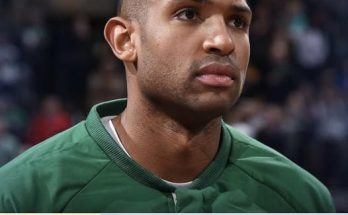Breaking news out of Cleveland has sent waves across both the sports world and the broader sphere of social responsibility. LeBron James, the four-time NBA champion and Ohio native who has long blended basketball greatness with philanthropic activism, has once again placed his heart and resources where his roots lie. In a stirring move that blends historical preservation, social justice, and youth advocacy, James has donated a remarkable $10.7 million to transform a historic house in Cleveland into a shelter for homeless youth. The house, once the residence of a late 19th-century civil rights leader, is now set to become a symbol of hope, resilience, and renewed purpose under James’ vision.
The property, located in the heart of downtown Cleveland, has stood for more than a century and has seen the city through multiple eras of struggle and growth. Once slated for demolition due to disrepair, the house caught the attention of local historians and activists who had lobbied for its preservation, but lacked the financial means to enact their vision. With LeBron James stepping in, the trajectory of this building—and the lives of the youth it will soon shelter—has been dramatically and irreversibly altered.
LeBron James has never been one to stand idly by while communities suffer. His “I PROMISE” program in Akron already serves as one of the most comprehensive educational and social initiatives in the nation, providing housing, education, and support for at-risk children and their families. With this latest donation, James expands his footprint to address another silent crisis that afflicts thousands of youth in urban America: homelessness. It’s a crisis that exists in the shadows, affecting kids who often slip through the cracks of institutions that weren’t built with their circumstances in mind. In Cleveland alone, estimates suggest that hundreds of youth experience homelessness on any given night. Some sleep on benches, others couch-surf, and many find themselves drawn into dangerous environments that only deepen their trauma and insecurity.
James’ initiative aims to reverse this narrative. His $10.7 million donation will go toward a complete structural rehabilitation of the historic home, outfitting it with modern amenities while preserving its rich architectural character. But more than the bricks and mortar, the funding will create wraparound services for its future residents—mental health counseling, educational programs, job training, and mentorship opportunities. It is not merely a shelter, but a launching pad. A place where youth can feel safe enough to dream again, to recover their self-worth, and to chart a path forward. The blueprint, modeled loosely on his I PROMISE housing program in Akron, will involve collaboration with local nonprofits, the city of Cleveland, and national experts on youth homelessness. LeBron’s foundation will oversee program development, ensuring that the same values of dignity, love, accountability, and empowerment remain at the center of the shelter’s mission.
Local reactions have been immediate and emotional. Cleveland Mayor Justin Bibb praised James’ donation as a “generational act of civic stewardship” and promised to work closely with his team to ensure zoning, licensing, and permitting moved swiftly to allow construction to begin. Historians have also lauded the move for preserving a site that has long been overlooked in discussions of Cleveland’s legacy. The home, built in the late 1800s, was once the residence of Samuel T. Reynolds, a prominent Black abolitionist who opened his doors to escaped slaves on the Underground Railroad. Over time, the house fell into neglect, reflecting the wider disinvestment that has plagued many historically Black neighborhoods in Cleveland.
For LeBron James, this act seems deeply personal. Though Akron is his hometown, his ties to Cleveland—where he delivered the Cavaliers’ only NBA championship in 2016—remain strong. More importantly, his life experience gives him a rare and authentic understanding of what homelessness, poverty, and trauma feel like. LeBron was raised by a single mother, Gloria James, who struggled to provide stability during his early years. At times, they moved from apartment to apartment, relying on the kindness of friends and the resilience of their bond to make it through. That instability left a permanent impression on LeBron, who has often cited it as the motivation behind his philanthropic work. He doesn’t just want to be remembered as a basketball icon; he wants his legacy to reflect what he gave back to the people who needed it most.
This project also comes at a time when discussions around athlete activism are shifting. For years, players were encouraged to “stick to sports,” but a new generation—following the footsteps of pioneers like Muhammad Ali and Bill Russell—has refused to be silenced. LeBron James is perhaps the most prominent modern example of this evolution. He has used his platform to speak out on issues ranging from police brutality to education inequality. Now, through this donation, he’s taking concrete action to address an issue that rarely receives headline attention: the plight of homeless youth in urban America.
There’s also a broader economic and cultural message embedded in this act. By revitalizing a historic landmark, James is challenging narratives of urban decay and neglect. He is also demonstrating that social investment is not only possible but essential. In a city where developers often chase profit at the expense of communities, James’ approach places human dignity at the center of urban development. Moreover, it invites other athletes, celebrities, and business leaders to rethink their role in the fight against poverty. With fame comes influence, and with influence comes responsibility—a lesson LeBron seems to have absorbed better than most.
His donation also draws attention to a gap in public policy. Despite numerous studies and reports on youth homelessness, funding for comprehensive services remains woefully inadequate. State-run shelters often have long waitlists, lack tailored support systems, or fail to accommodate the specific emotional and psychological needs of teenagers. LGBTQ+ youth, in particular, are disproportionately represented among the homeless population and face additional layers of discrimination and violence. James’ model—a shelter infused with compassion, opportunity, and strategic infrastructure—could serve as a new gold standard for cities around the country.
As the news continues to ripple through social media and traditional outlets, public figures have chimed in with their admiration. Former President Barack Obama tweeted his congratulations, calling LeBron “a true American hero—on and off the court.” NBA Commissioner Adam Silver praised James for “redefining what it means to be an MVP in life,” while players across the league—from Steph Curry to Jayson Tatum—expressed their pride in being part of a league that includes someone so deeply committed to real-world change.
Even LeBron’s own teammates and family have spoken out. His wife Savannah, who has been instrumental in many of the James Family Foundation’s initiatives, noted that this shelter aligns with their family’s core values: service, sacrifice, and community. His children, particularly Bronny James, have also expressed interest in continuing the work of their father once their own careers take shape. The legacy is multi-generational, both in terms of the James family and the lives that will be touched by the shelter.
Construction on the shelter is expected to begin in early fall, with a target completion date set for the following summer. The house will retain its historic facade while the interior is fully modernized to include dormitory-style living quarters, study rooms, therapy spaces, and a full-service kitchen. Outside, a memorial garden will be created to honor Samuel T. Reynolds and other historical figures who once lived in the neighborhood, connecting past struggle with present hope.
This moment marks yet another chapter in the extraordinary life of LeBron James—a man who entered the public eye as a teenage basketball prodigy and has since evolved into one of the most impactful humanitarians of our time. While his feats on the basketball court may be immortalized in highlight reels and record books, it’s clear that his truest legacy will be written in places like this shelter—in lives healed, dreams reignited, and futures rewritten.



